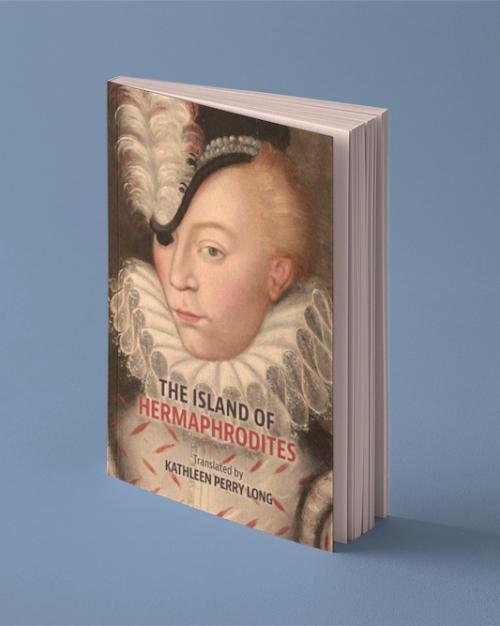A scandalous novel hit the streets of Paris in 1605. Published anonymously, the satire, which follows a hapless visitor on his journey through an imagined land of aristocratic excess, created an uproar for its irreverent portrayal of the French court and questioning of gender and power. It remained popular – and in print – for more than a century.
“It is a very funny critique of court life that resonates for anyone dealing with very hierarchical institutions in which the exercise of power is often inscrutable and seemingly random,” said Kathleen Perry Long, professor of French in the Department of Romance Studies, College of Arts and Sciences. Her new translation, “The Island of Hermaphrodites,” offers the first English version of the full novel, along with commentary.
The novel’s examination of French monarchy and nobility reflects issues that led to the French Revolution, Long said: excessive expenditures on luxuries, hoarding of wealth, inequality and cruelty inflicted on the poor. It is also a meditation on what a nonbinary society might look like, with its conclusion offering “a vision of a community where all human beings are connected and can choose either to perish or to thrive together.”
The College of Arts and Sciences spoke with Long about the book.
Question: What are the distinguishing features of the Island of Hermaphrodites the storyteller finds after his shipwreck?
Answer: The storyteller wanders through a palace in which he observes the “strange” and strangely familiar lifestyle of the inhabitants of the island: how they get dressed, have their hair done and eat.
Their clothing is expensive, with silk, jewels and lots of lace. The people are so carefully made up and dressed that they look like statues. The author takes great care to describe architecture, clothing, jewelry and furnishings, emphasizing the material aspects of the court.
The largest portion of the novel is a series of laws based on actual 16th-century laws concerning religion, clothing, education, forestry, the military – in fact, almost every aspect of French life at the time was subject to the law. This creates the impression of a topsy-turvy society where rules are made to be broken or twisted according to the whims of those who made them.
Q: In the world of the island, what importance do lavish and detailed descriptions of clothing play?
A: Clothing was intimately linked to all aspects of identity in this period. This fact was codified by laws that dictated what people of various social classes could wear. Clothing was complex, and the styles and colors could also reveal political affiliations, as courtiers aligned with a particular noble person would wear that person’s heraldic colors. In principle, men and women were supposed to wear clothing appropriate to their assigned gender.
But in fact, as the novel suggests, the lines of identity were often blurred by clothing. Men sometimes wore effeminate-looking clothing and members of the court of Henri III of France, also known as Henri de Valois, were particularly accused of effeminacy and even of homosexuality, which in that period was a crime that could be punished by death. Wealthy bourgeois people often wore the same clothing as the nobility. Thus, clothing both confirmed identity and created the possibility of reshaping it. The novel both celebrates this possibility and mocks it, particularly in the description of courtiers trying to squeeze a large royal foot into a tiny shoe.
Q: Why do you think this novel was so popular?
I think that this novel spoke to the frustration of many people with the French monarchy, which was detached from their needs in the wake of the French Wars of Religion. Many people died in these wars – as many as 4 million over the course of nearly four decades, roughly one-fifth of the population. The country was left devastated by disease and famine as the nobles at the French court continued to lead a lavish lifestyle at the expense of the poor who produced the rich food they ate and the expensive clothing they wore.
Q: How might its political critiques resonate with readers today?
As exotic as the 16th-century French court might seem, the concerns voiced in this novel about wealth disparity and the abuse of power serve as valuable insights into today’s world. While the novel seems at first simply to mock the nobility’s obsession with style and luxury and the frivolity and shallowness of the royal court, it focuses far more on the cruelty that results from putting power in the hands of one person or a small group of people.
Two political treatises conclude the novel. The first, a parody of justifications of absolute rule, states that all subjects must be ready to suffer for the sake of their sovereign, but without the sovereign taking any responsibility for their welfare. The second treatise presents all of humanity as connected, asserting that the infliction of suffering on some will result in the ruin of all. This call for ethical treatment of everyone is a powerful political message.





